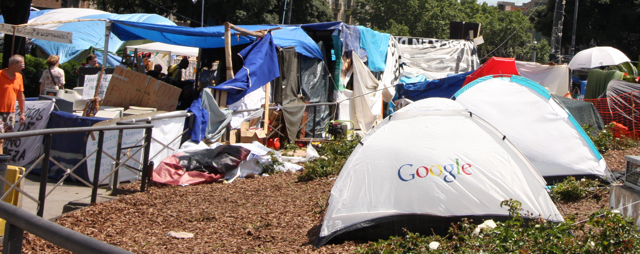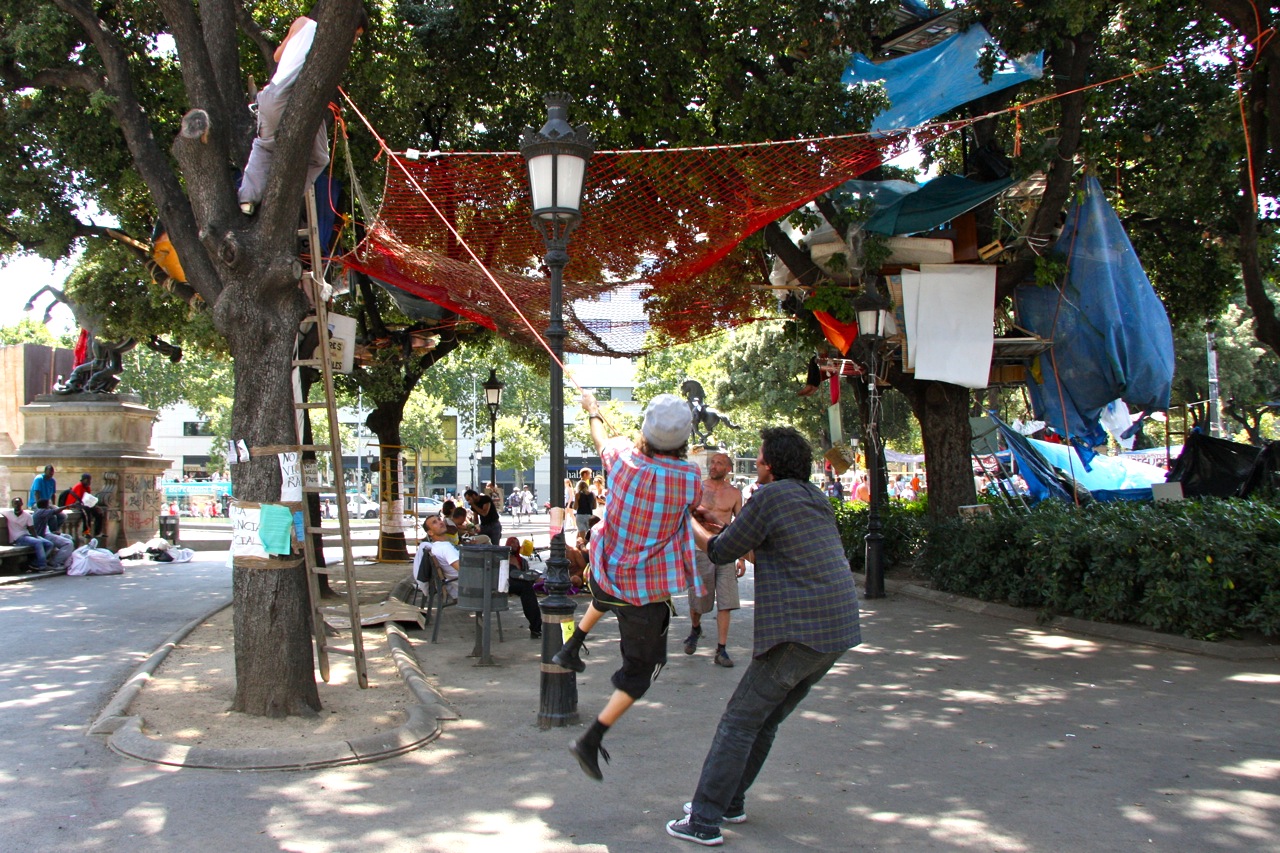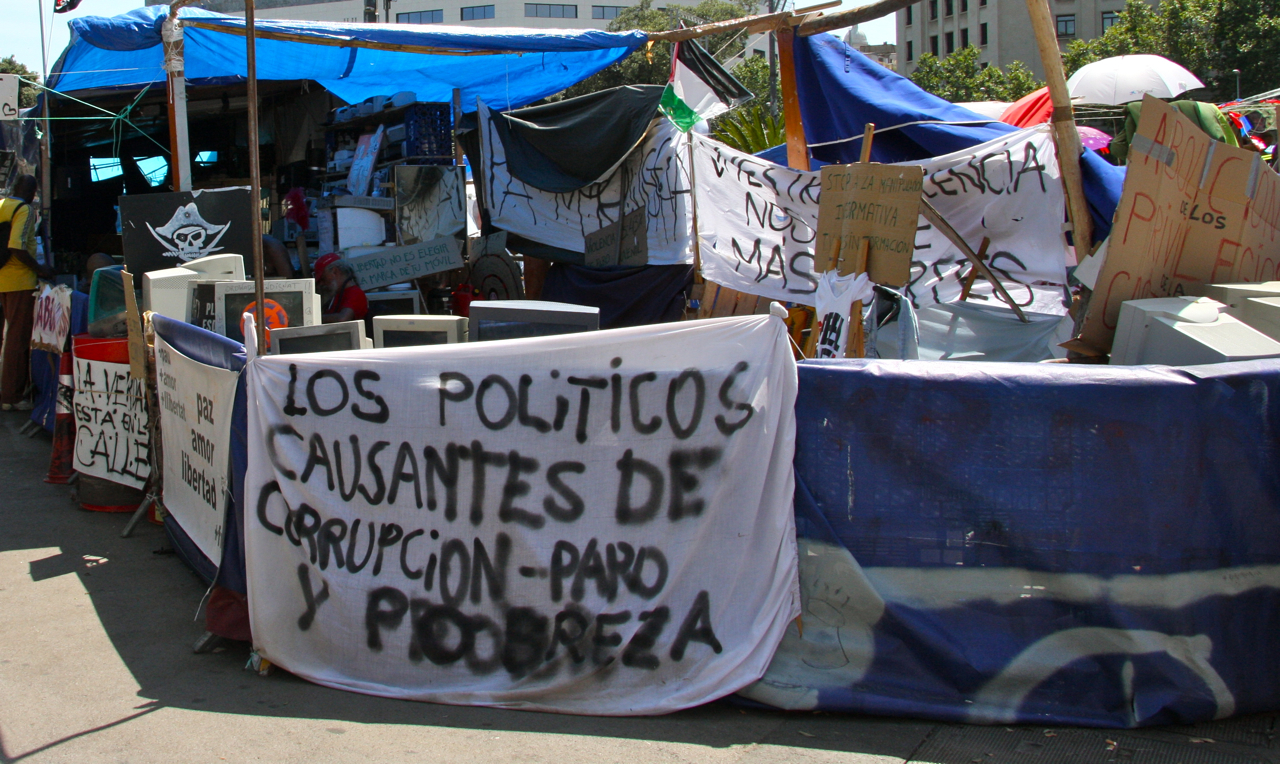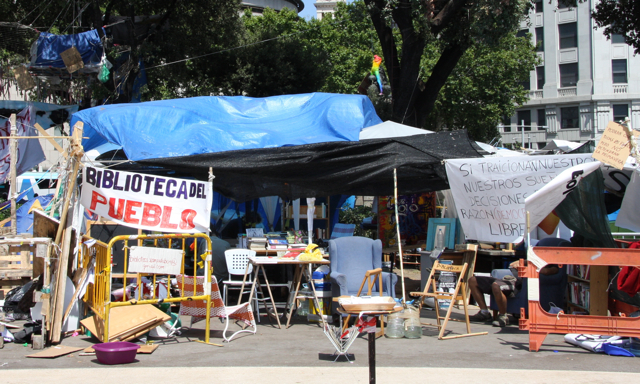In Monday’s lecture, Bodies in Alliance and the Politics of the Street, Butler characterized the financial crisis as an actively-waged neo-liberal war against democracy and the ethics of social interdependency that are inherent to it. This is what gives the notion of alliance its political power—pursuing alliances and recognizing already-existing alliances with others is a method for combating neo-liberal economic imperatives that aim to divide and conquer. Butler was keen to point out that all subjects already contain internal alliances, and that the act of alliance is latent at the level of subject formation itself. In her words, “the ‘I’ is already an assemblage,” of identifications, desires, languages, sexualities, beliefs, discourses, etc. Accordingly, “queer” refers not to any particular kind of sexual or gender identity, to a way or state of being or an “identitarian ontology,” but instead to certain forms of internally- and externally-negotiated alliances. By containing a complex array of diverse, competing, and changing constituencies, the subject is thus always already a political entity, both singular and plural, much in the same manner as “we the people.”
Butler went on to pose a critique of Hannah Arendt’s political theory, focusing on Arendt’s formulation of the public and private spheres, which traces a genealogy of these concepts back to the Ancient Greek polis. Fellow bloggers have done a good job of summarizing the stakes of Butler’s critique, so I won’t rehearse them here. Importantly, though, she was keen to connect her argument to the explosion of mass protests sweeping the world, from Tahrir Square to Oakland. Of course, just a few hours later, Mayor Bloomberg sent in a militarized NYPD squad to violently evict the Occupiers from Zuccotti Park. This returns us to the fundamental problem of violence, a topic which Arendt tackled extensively and I hope Butler will expand upon in her next talk on the ethics of co-habitation. Are we to believe, with Arendt, that violence is not a manifestation of power, but instead signals its lack? Is non-violence an appropriate response to state-sanctioned police violence, like that perpetrated at Zuccotti Park early Tuesday morning? When Butler briefly addressed these questions, she characterized non-violence as a kind of “counter-performativity,” a refusal to act that disrupts and resists the established terms of political confrontation, citing the Tahrir Square protestors’ chant of “peaceful” as they marched through the streets under threat of police retaliation. As Occupy Philly faces its own impending eviction from Dilworth Plaza, the political, ethical, and philosophical implications of violence are increasingly urgent questions, ones that I hope Butler’s remarks will address next week.




